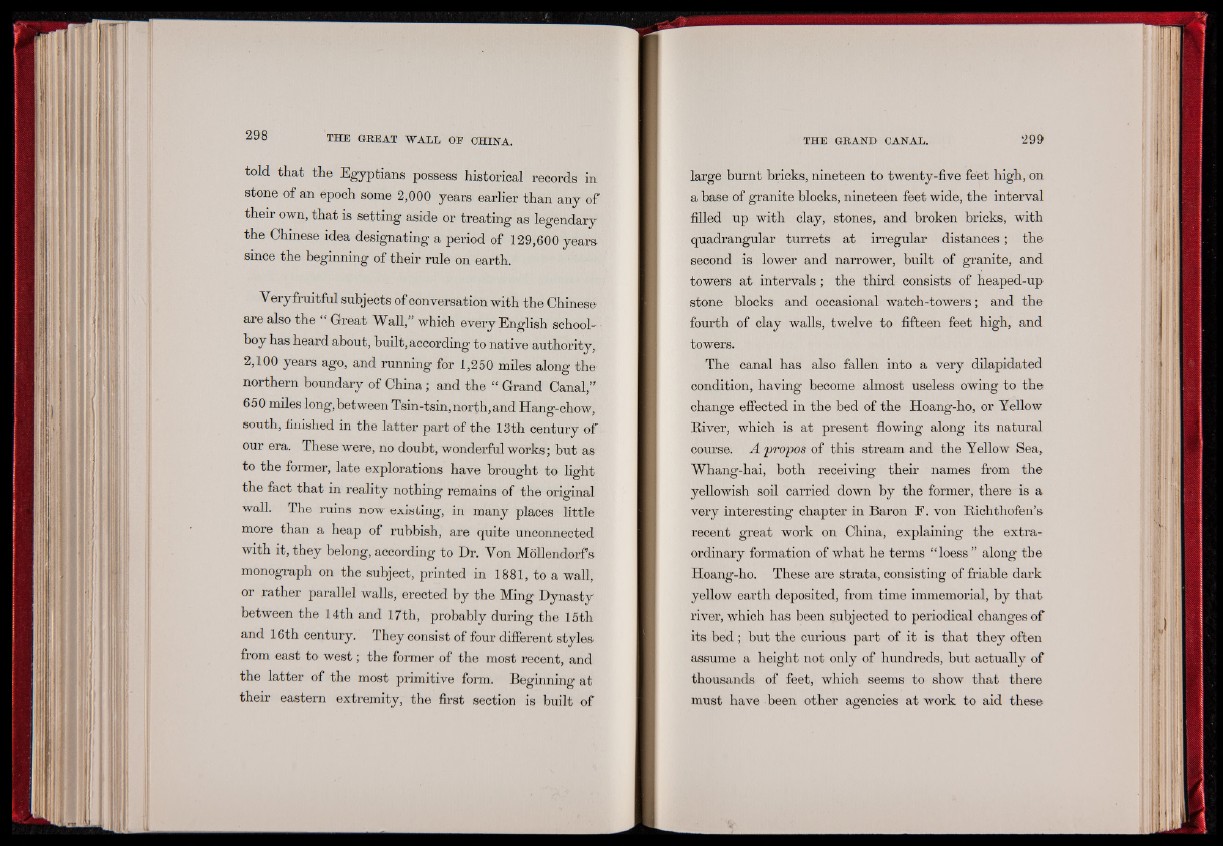
told that the Egyptians possess historical records in
stone of an epoch some 2,000 years earlier than any of
their own, that is setting aside or treating as legendary
the Chinese idea designating a period of 129,600 years
since the beginning of their rule on earth.
Very fruitful subjects of conversation with the Chinese
are also the “ Great Wall,” which every English schoolboy
has heard about, built, according to native authority,
2,100 years ago, and running for 1,250 miles along the
northern boundary of China; and the “ Grand Canal,”
650 miles long,between Tsin-tsin,north,and Hang-chow,
south, finished in the latter part of the 13th century of
our era. These were, no doubt, wonderful works; but as
to the former, late explorations have brought to light
the fact that in reality nothing remains of the original
wall. The ruins now existing, in many places little
more than a heap of rubbish, are quite unconnected
with it, they belong, according to Dr. Von Mollendorfs
monograph on the subject, printed in 1881, to a wall,
or rather parallel walls, erected by the Ming Dynasty
between the 14th and 17th, probably during the 15th
and 16th century. They consist of four different styles
from east to west; the former of the most recent, and
the latter of the most primitive x form. BeOe innineo- at
their eastern extremity, the first section is built of
large burnt bricks, nineteen to twenty-five feet high, on
a base of granite blocks, nineteen feet wide, the interval
filled up with clay, stones, and broken bricks, with
quadrangular turrets at irregular distances; the
second is lower and narrower, built of granite, and
towers at intervals ; the third consists of heaped-up
stone blocks and occasional watch-towers; and the
fourth of clay walls, twelve to fifteen feet high, and
towers.
The canal has also fallen into a very dilapidated
condition, having become almost useless owing to the
change effected in the bed of the Hoang-ho, or Yellow
River, which is at present flowing along its natural
course. A propos of this stream and the Yellow Sea,
Whang-hai, both receiving their names from the
yellowish soil carried down by the former, there is a
very interesting chapter in Baron F. von Richthofen’s
recent great work on China, explaining the extraordinary
formation of what he terms “loess ” along the
Hoang-ho. These are strata, consisting of friable dark
yellow earth deposited, from time immemorial, by th a t
river, which has been subjected to periodical changes of
its bed; hut the curious part of it is that they often
assume a height not only of hundreds, but actually of
thousands of feet, which seems to show that there
must have been other agencies at work to aid these